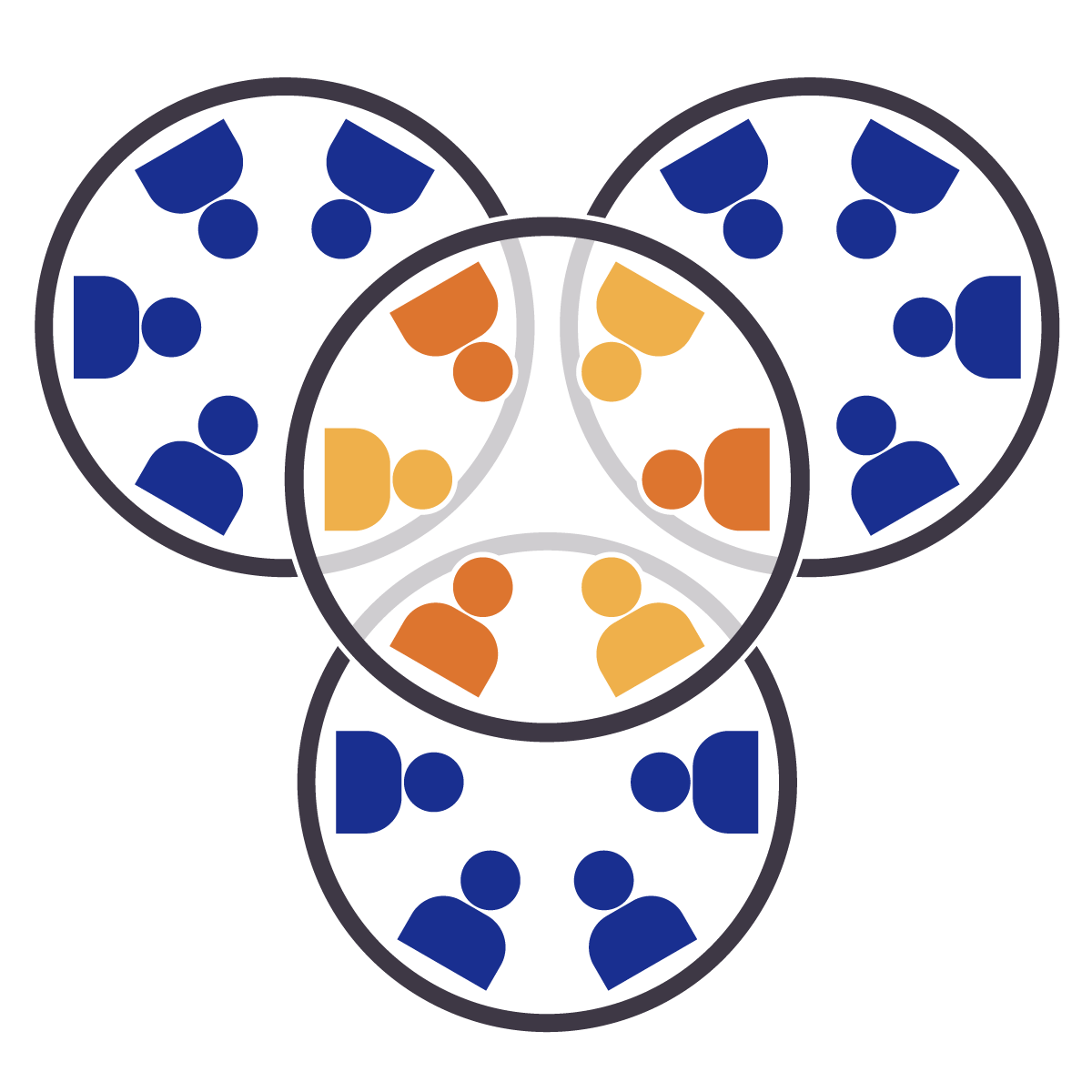Double linking is a term used in sociocracy, also known as dynamic governance, which is a decision-making and governance method used in organizations.
In sociocracy, double linking refers to the practice of individuals having two roles within an organization: one as a members of the child circle, and another as members of the broader circle named the parent circle.
The two roles that assure the double linked principle are related to the child circle and are named leader (coordinator) and delegate. Both, the leader (coordinator) and the delegate of a child circle have also full membership and consent rights on the parent circle as well.
The leader (coordinator) and the delegate roles have different purposes. While the delegate reports from the child circle to the parent circle, the leader (coordinator) represents the parent circle in the child circle.
In sociocracy, circles are semi-autonomous working teams that have the authority to make decisions within their own domain, while also being double linked connected to their parent circle.
Double linking is designed to create a strong feedback loop between the child circle and the parent circle, ensuring that decisions made at the broader level are correlated with the perspectives and expertise of those working in the child circle and vice versa. This allows for more effective decision-making in both parent and child circles, as it encourages information sharing, collaboration, and collective intelligence.
In practice, double linking involves individuals participating in both the child circle and the parent circle. The delegate bring information, ideas, and proposals from the child circle to the parent circle, and the leader (coordinator) report back and coordinate the overall activities of the child circle.
This facilitates communication, accountability, and transparency, and helps ensure that decisions made in the parent circle are aligned with the needs and realities of the child circle and vice versa.
Double linking in combination with consent decision-making not only prevents power-over but it also serves the flow of information. The “higher” circle will hear about what the “lower” circle is up to, and vice versa.
Overall, double linking is a key feature of sociocracy that fosters effective communication, collaboration, and decision-making within organizations, and helps create a sense of ownership and empowerment among members who work together and decide together.
–
In sociocracy, a parent circle and a child circle are terms used to describe the relationship between two circles or teams within an organization that are connected in an horizontal structure but into an operational hierarchy (not a people hierarchy), I mean a hierarchy of processes.
The parent circle is a higher (broader) level circle that coordinates one or more child circles, which are lower (more specific) level circles that operate semi-autonomously within the domain defined by the parent circle. This hierarchical process relationship allows for decentralized decision-making while maintaining overall coordination and alignment.
The parent circle provides guidance, support, and oversight to the child circle(s), and is responsible for making decisions that affect a broader domain. The child circle(s), on the other hand, have authority to make decisions within their specific domain, and are responsible for implementing those decisions and managing their operational activities.
The parent circle and child circle relationship is designed to foster collaboration and coordination, while also allowing for autonomy and empowerment at the operational level.
Decision-making authority is distributed to the appropriate level, with the parent circle making decisions that impact the broader organization, and the child circle(s) making decisions that are relevant to their specific domain.
Communication and information flow between the parent circle and child circle(s) are essential for effective functioning of this process hierarchical relationship.
The child circle representatives (leader and delegate) has fully membership in both the child circle and the parent circle. No decisions could be made without their consent neither in child circle nor in the parent circle, so no circle could overpower the other circle.
The parent circle provides guidance, feedback, and decisions that impact the child circle(s). Decisions made at the parent circle level are informed by the perspectives and expertise of the child circle(s). In the same time, the decisions made in the child circle(s) are aligned with the overall direction set by the parent circle.
The parent circle and child circle relationship in sociocracy allows for a balance between autonomy and coordination, enabling effective decision-making and governance within organizations that adopt sociocratic principles.
p.s. Are you holding the role of the facilitator of a circle in your organization? Would it help you to reflect with others on what it means to be a facilitator in a sociocratic organization? Would you like to practice being a facilitator? This Community Of Practice might be helpful for you:

In the Community of Practice for Facilitators (CoP-F) no one teaches anyone, but we all learn from each other by practicing and sharing real life experiences.
We welcome your presence and contribution. It will enrich all of our sociocracy knowledge.
Best wishes to all of you!
